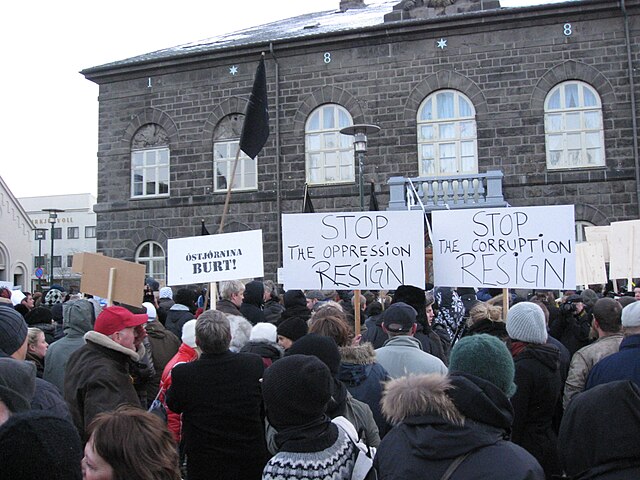The economy of Iceland is small and subject to high volatility. In 2011, gross domestic product was US$12 billion, but by 2018 it had increased to a nominal GDP of US$27 billion. With a population of 387,000, this is $55,000 per capita, based on purchasing power parity (PPP) estimates. The 2008–2011 Icelandic financial crisis produced a decline in GDP and employment that has since been reversed entirely by a recovery aided by a tourism boom starting in 2010. Tourism accounted for more than 10% of Iceland's GDP in 2017. After a period of robust growth, Iceland's economy is slowing down according to an economic outlook for the years 2018–2020 published by Arion Research in April 2018.
Reykjavík
Alcoa's aluminium plant in Reyðarfjörður, Iceland
2008–2011 Icelandic financial crisis
The Icelandic financial crisis was a major economic and political event in Iceland between 2008 and 2010. It involved the default of all three of the country's major privately owned commercial banks in late 2008, following problems in refinancing their short-term debt and a run on deposits in the Netherlands and the United Kingdom. Relative to the size of its economy, Iceland's systemic banking collapse was the largest of any country in economic history. The crisis led to a severe economic slump in 2008–2010 and significant political unrest.
Prime Minister of Iceland Geir H. Haarde speaks with reporters on 27 October 2008.
The value of the OMX Iceland 15 from January 1998 to October 2008
Some of the 6000 protesters in front of the Alþingishús, seat of the Icelandic parliament, on 15 November 2008.





